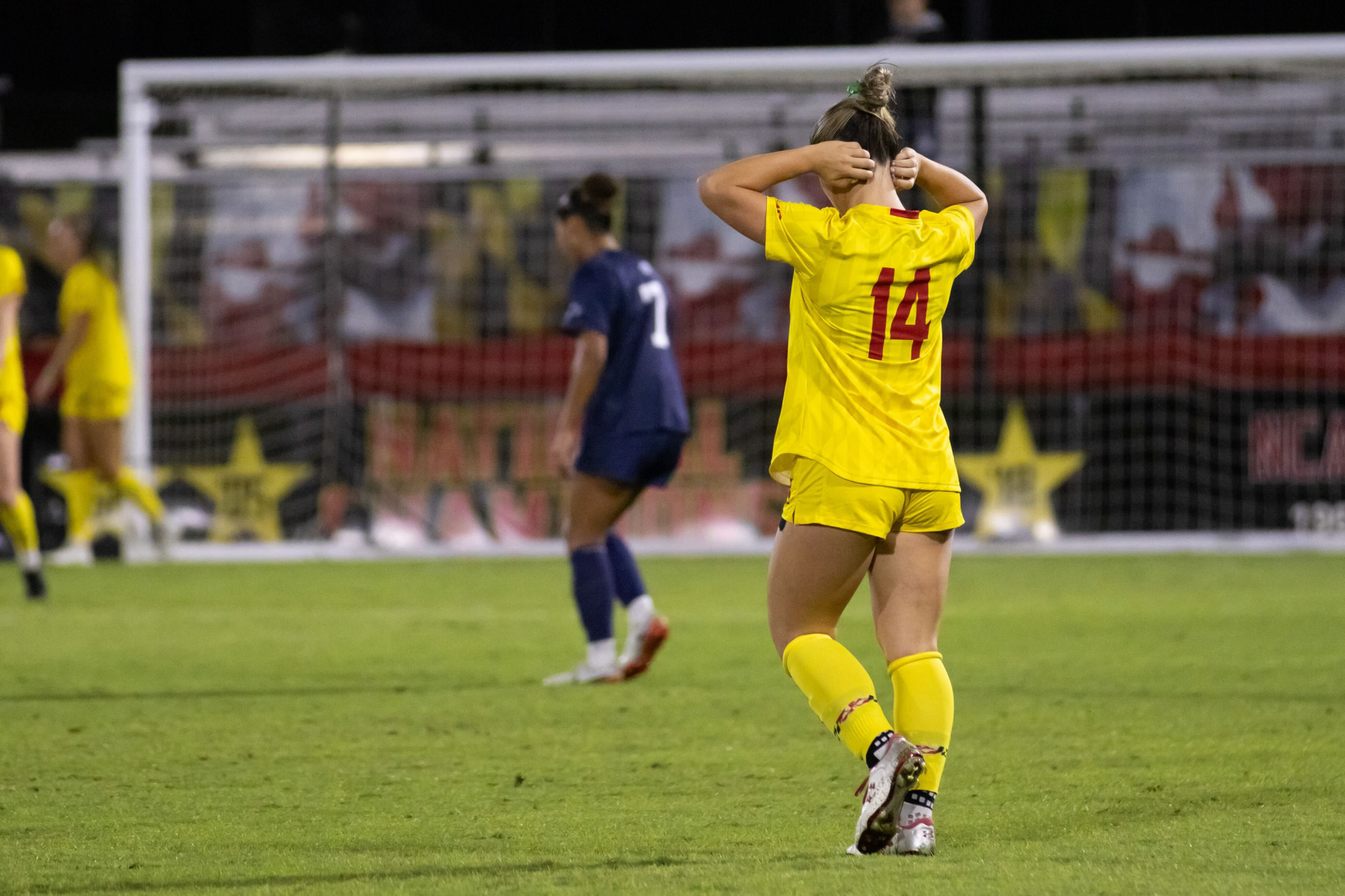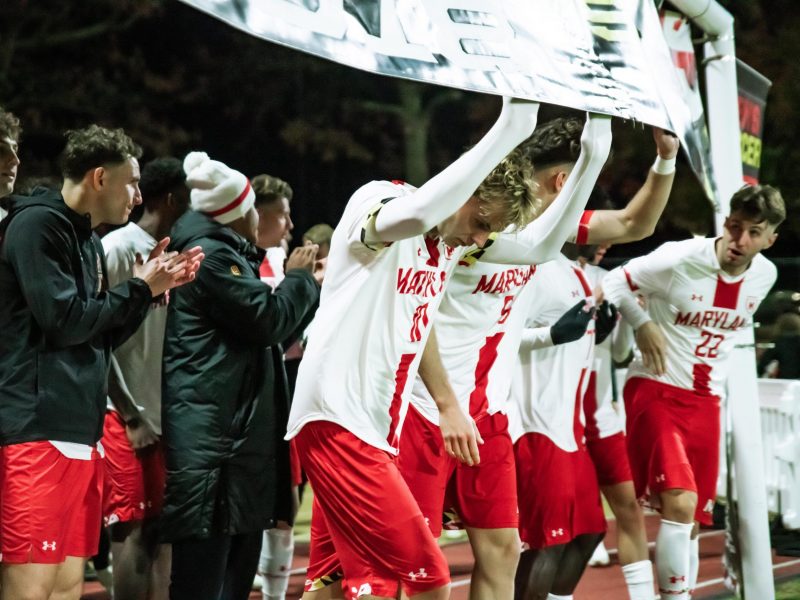Maryland women’s soccer led at halftime with a 1-0 lead over Ohio State, a rare position this season. Then coach Michael Marchiano made a puzzling decision.
He replaced goalkeeper Faith Luckey – who has played in every game this season – with Maya Cheeseboro, who has not seen any action. She subsequently allowed three second-half goals, which handed Maryland its seventh straight loss in conference play.
The Terps (6-11) lost to Ohio State (8-2-6) 3-1 on Sunday at Ludwig Field. Three late second period goals cost them a chance at a signature Big Ten win.
Marchiano said the plan was to play Cheeseboro no matter what, considering the meaningless nature of the game.
“That was a predetermined decision to reward somebody who we care about their development, and we think that they deserve the chance to play, given the context of the game today,” Marchiano said.
After Maryland’s comeback effort fell short against Michigan, it cemented another losing record and ended conversations of a potential postseason appearance. The Terps were rewarded with a team who has beaten or tied them 14 times in Ohio State, who has allowed only seven goals in the all-time series.
The Buckeyes were without one of their top options in goalkeeper Molly Pritchard. The goalie has recorded a 91% save rate this season, a worrying sign for a struggling Terps offense. But in Ohio State’s last contest against Rutgers, Pritchard received a red card that disqualified her from play at Ludwig Field.
[Maryland women’s soccer’s late comeback falls just short in 4-3 loss to Michigan]
As a result, the Buckeyes were forced to play alternate keeper Peighton Northrup on Sunday. The Terps took advantage with an early goal from forward Kelsey Smith. The team’s goal leader used her speed on a breakaway to put Maryland up 1-0.
The goal gave the Terps a halftime lead, an advantage they have not had much this season. But at the break, coach Michael Marchiano made a puzzling decision to replace goalkeeper Luckey with Cheeseboro. Luckey’s been one of the few bright spots for Maryland this season, as despite being the detractor of leaky defense, she’s been one of the top goalies in the Big Ten this season.
Meanwhile, Cheeseboro transferred to Maryland in the offseason from Boston College. The former Washington Post All-Met selection returned to her home state to join the Terps, but had not entered a match prior to Sunday.
On the first shot she faced in her career, Cheeseboro allowed the Buckeyes to tie up the match.
The goal echoed similar scenarios this season in which Maryland exited halftime unprepared, allowing the opponent to score minutes after the whistle. Just like last game against Michigan and weeks ago against Illinois, the Terps allowed attackers to slip past their defense for an easy goal.
“We can’t have this sort of victim mentality,” Marchiano said. “We have to fix it, and they have to fix it.”
[Maryland women’s soccer’s Big Ten-road struggles continue in 2-0 loss to Nebraska]
That first goal appeared to open the floodgates in the Maryland defense. The unit allowed eight corner kicks and kept the Buckeyes in scoring position. The defensive holes that have appeared all season seemed to improve in the first half, but quickly reverted to typical expectations by the second.
Ohio State broke through the tie in the 82nd minute with a goal from forward/midfielder Amanda Schlueter, who ran a pass just over the goal line. Seconds later, she doubled up on her goal and launched a second shot into the right corner of the Terps’ net.
The Terps were yet again outshot by an opponent, allowing 15 shots on goal compared to only one. All the promise that popped up in the beginning of the season has faded over the span of conference play.
Maryland now finds itself in a familiar position. At the bottom of the Big Ten, with no hopes for a postseason appearance.
“We’re just trying to make sure that we get across the finish line with a group that doesn’t stop competing, a group that sticks together,” Marchiano said. “We want to make sure we have a team that doesn’t give up.”



